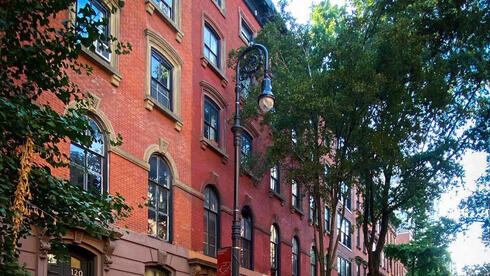We are walking along 9th Street in the heart of the East Village neighborhood in southeastern Manhattan. On the steps outside one of the buildings, we meet Walter Fitzpatrick, an artist and musician in his 50s. He moved here in the 1990s and has been living and breathing the life of the neighborhood ever since. When we ask him to describe what it was like here in the 1990s, he sighs with a smile and says: “Wow, what it was like. Where do you want me to start?” His expression conveys a message: “You probably wouldn’t have wanted to come near this place back then.”
East Village
(Video: Roee Alman)


Indeed, during the 1980s and 1990s, the East Village looked like an area the city had abandoned. The streets were lined with vacant lots, scattered junk, rising crime and a general atmosphere of urban neglect. The park at the heart of the neighborhood—Tompkins Square—became an improvised camp for homeless individuals, drug dealers, and young people living on the fringes of society. The entire area radiated chaos, but at the same time it attracted artists, musicians, activists and alternative figures who saw the abandoned and unruly setting as a place to start something new.
The result is what we see today, three decades later. The East Village has become one of the most colorful, vibrant and charming neighborhoods in New York City. Yet it remains far from the glamorous image often associated with the city. There are no skyscrapers, no large shopping centers, and the average building height is just three to four stories, allowing for an open view of the sky. You won’t find fast-food chains or major clothing brands here either. The streets are narrow and relatively quiet, with a strong sense of community evident at every turn. And fire escapes… oh so many residential fire escapes on the side of red buildings. The neighborhood has managed to maintain its independent and human character, as if “stuck” in the best moment of its past, as if surgically cut -off from the New York “hoopla.”
This unique blend of dense urban living and intimate neighborhood life feels less like touristy New York and more like a small urban village forgotten by the city, much to the delight of its residents. Visitors to the area get an authentic glimpse of local life in one of the most influential cities in the world. The neighborhood’s history is full of successful public battles, the impact of which can still be seen today. Its proximity to New York University (NYU) is strongly felt, as the area exudes a youthful and energetic vibe, with many students choosing to live here.
If there’s one street that encapsulates the free spirit of the East Village, it’s St. Mark’s Place—a stretch of 8th Street spanning three blocks. This street is a wild bubble that has managed to preserve the anti-establishment vibe of the East Village. It was once the main stage of alternative New York: tattoo shops, dimly lit basements, small restaurants, and live music created a space where the city truly came alive. Even Jay-Z references the street in his song “Empire State of Mind,” mentioning “Cruisin’ down 8th Street, off-white Lexus,” a nod to the energy that begins on this street and makes the city feel genuinely alive.
4 View gallery
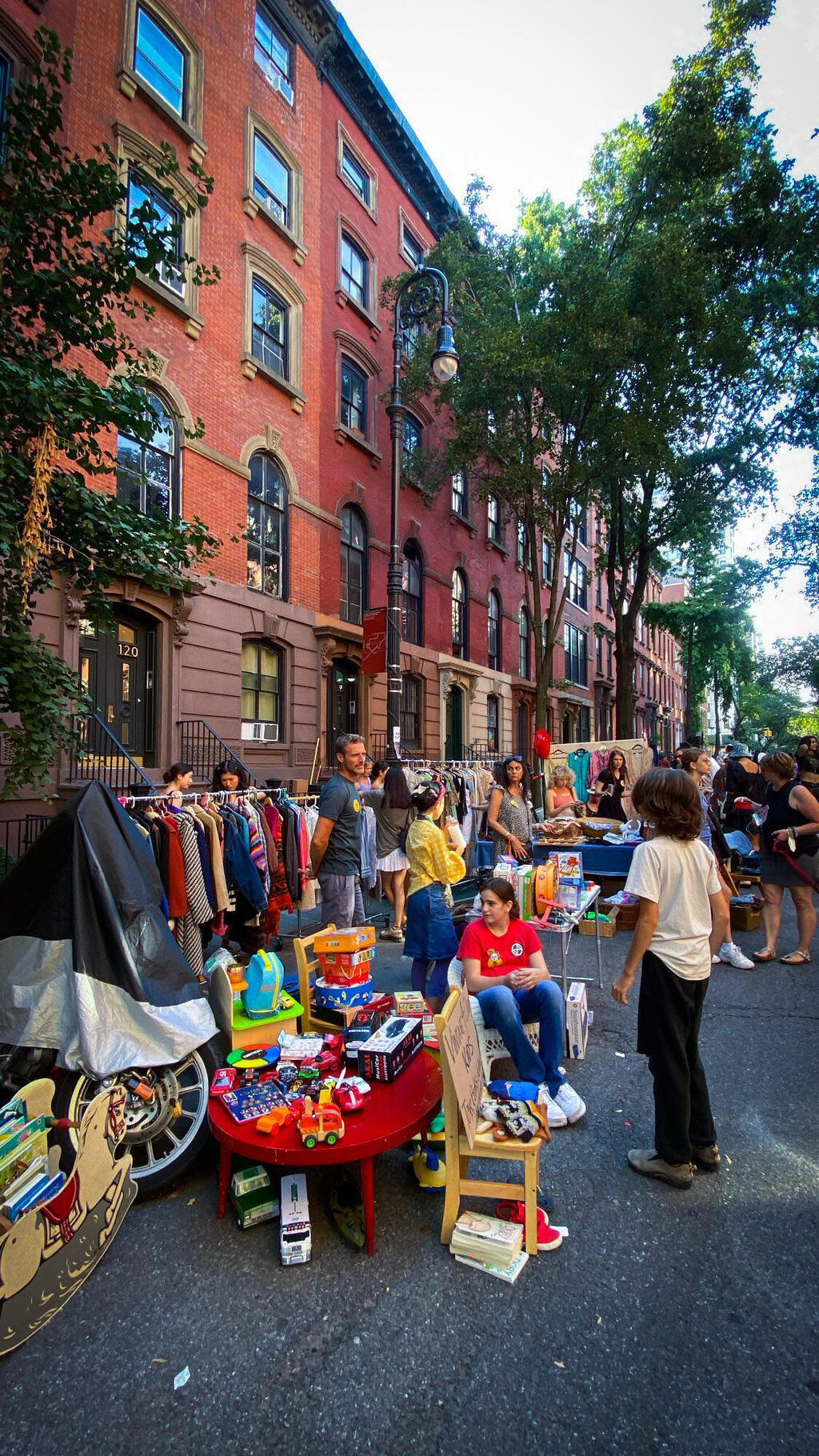

East Village garage sale
(Photo: Roee Alman)
By day, the street operates as a living museum of New York City lifestyles—not one with white walls and written descriptions, but one that invites you to enter, wander and immerse yourself. Record stores, second-hand shops, ever-changing graffiti, and an atmosphere that insists on staying on the fringes even as everything around it evolves. It’s not the prettiest street in New York, but it’s one of the most authentic. There’s a certain messiness to it, and that’s exactly the charm.
At the heart of the East Village lies Tompkins Square Park, the focal point of the neighborhood. Opened to the public in 1834, the park spans about 2.5 acres (10 dunams) between Avenues A and B, from 7th to 10th Streets. It features sprawling lawns, two playgrounds, a seasonal public pool, a skate park, basketball courts, chess and ping-pong tables, and dog parks. The park is a daily gathering spot for the neighborhood’s diverse population, including families with children, young adults, students and older residents.
Before it became the peaceful family-oriented space it is today, the park was the site of one of the neighborhood’s most turbulent events. In the summer of 1988, the city decided to impose a nighttime curfew to drive out the homeless and drug dealers. This decision led to violent clashes between police and residents. On the night of August 6-7, a peaceful protest escalated into a direct confrontation, leaving dozens of demonstrators injured. Over 100 complaints of police brutality were filed, and the event, captured on camera, made waves in the media. For many in the East Village, this was both a breaking point and a moment of civic awakening.
4 View gallery
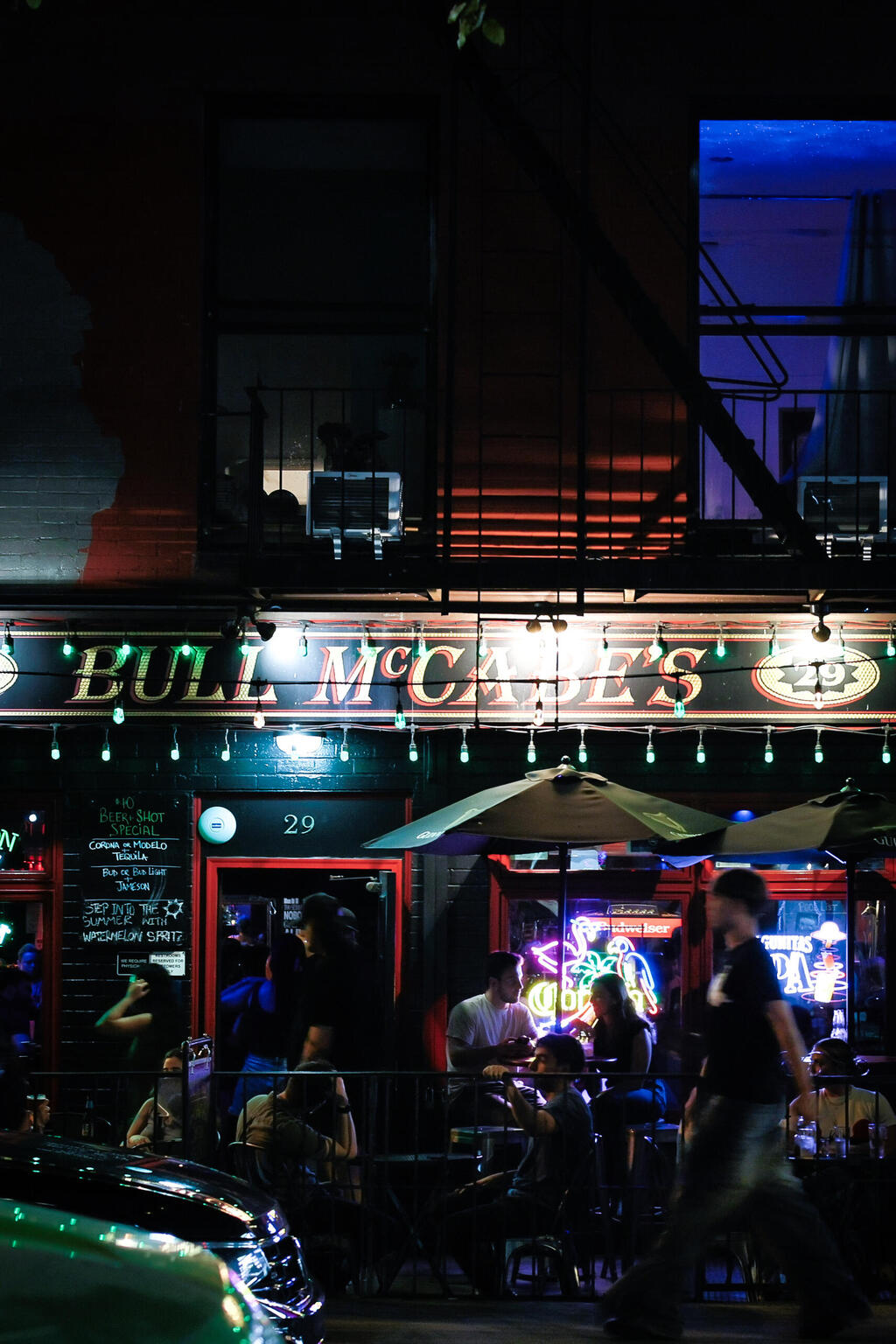

St. Mark’s Place
(Photo: Roee Alman)
Today, the park is a completely different place. In the summer, it hosts live music performances, outdoor movie screenings, community festivals and initiatives like free food distribution for underserved communities. Its open spaces and welcoming atmosphere attract all social groups, from families to musicians, skateboarders, and those seeking tranquility.
The East Village boasts the highest concentration of community gardens in New York City. Every few blocks, you’ll find a lush green space enclosed by fences, with gates and set hours, offering a rare moment of urban serenity in one of the most expensive areas in the world. In real estate terms, each garden represents land worth tens of millions of dollars, yet they remain free of concrete to this day.
These gardens are beautifully maintained by local residents, who fought to preserve them. Wandering through them feels magical—like a small jungle with benches, shade and fountains. Often, you’ll find people sitting quietly with a book or simply gazing at the sky, enjoying a personal retreat in the middle of the city. Among these gardens, the Green Oasis Community Garden stands out for its unique charm. Established in 1981 on five abandoned lots, it has become a vibrant green space featuring trees, a fish pond, artistic installations, and even a small performance area.
The East Village is a culinary hotspot, filled with restaurants, cafes and bars of every kind. Chains are virtually nonexistent here; everything is local and neighborhood-focused. One of the most beloved spots is Ninth Street Espresso, located at the northeast corner of Tompkins Square Park. This small café serves high-quality coffee in a style familiar to Israelis, offering coffee beans for sale and hosting monthly photography exhibitions.
4 View gallery
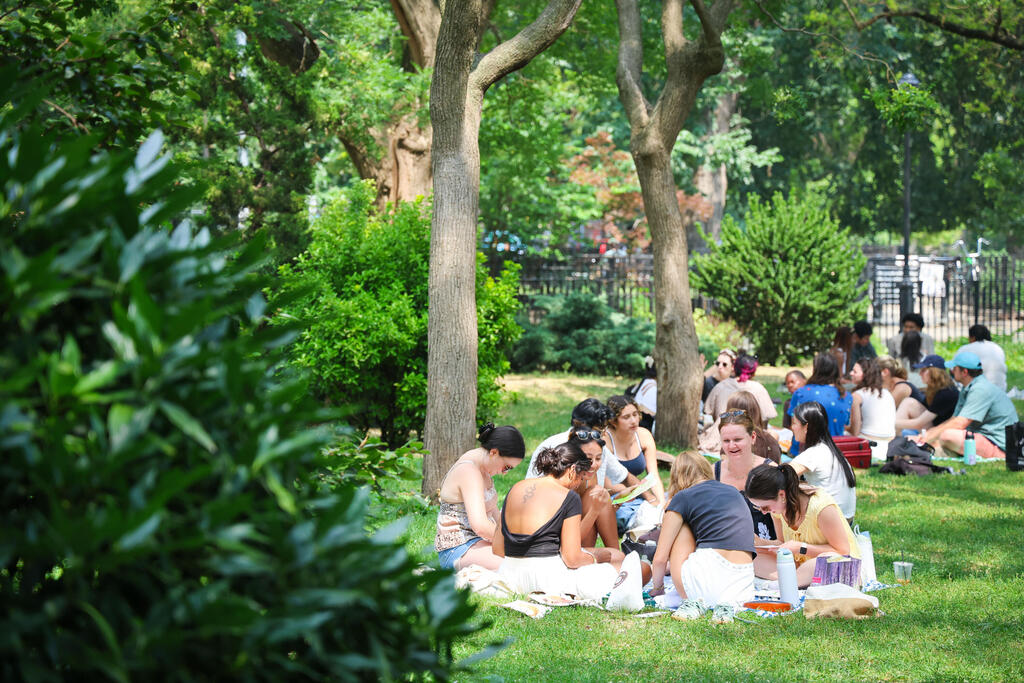

Saturday at an East Village park
(Photo: Roee Alman)
Israeli cuisine has a special place in the neighborhood. Café Mogador, operating since 1983, serves classic dishes like shakshuka, hummus, couscous and tagines. On Avenue A, Westville offers a farm-to-table menu with fresh vegetables, simple fish dishes, salads and chicken.
For those seeking a taste of Taiwan, 886 on St. Mark’s Place serves classic Taiwanese street food with a modern twist, complete with neon lights, music and a lively atmosphere. And for breakfast or a midday snack, Tompkins Square Bagels is a must-visit, offering dozens of cream cheese flavors and creative sandwich options.
Beyond its well-documented artistic and cultural significance, the East Village is also home to one of New York City’s most fascinating literary histories. In the mid-20th century, the neighborhood became a hub for the Beat Generation, with writers like Allen Ginsberg and Jack Kerouac frequenting its cafes and bars. The legendary Poetry Project at St. Mark’s Church, founded in 1966, continues to be a cornerstone of avant-garde poetry and literature, hosting readings and workshops for decades.
Additionally, the East Village is notable for its immigrant history. In the late 19th and early 20th centuries, the area was populated by immigrants from Germany, Poland and Ukraine, earning it the nickname “Little Ukraine.” The Ukrainian Museum in the neighborhood preserves this cultural heritage, showcasing traditional art, artifacts, and historical records.
The East Village is also known for its vibrant nightlife. Iconic music venues like Webster Hall and Bowery Electric uphold the area’s legacy of live music, while smaller, eclectic bars such as Please Don’t Tell (PDT)—a hidden speakeasy—offer a modern twist on the neighborhood’s rebellious charm.
4 View gallery
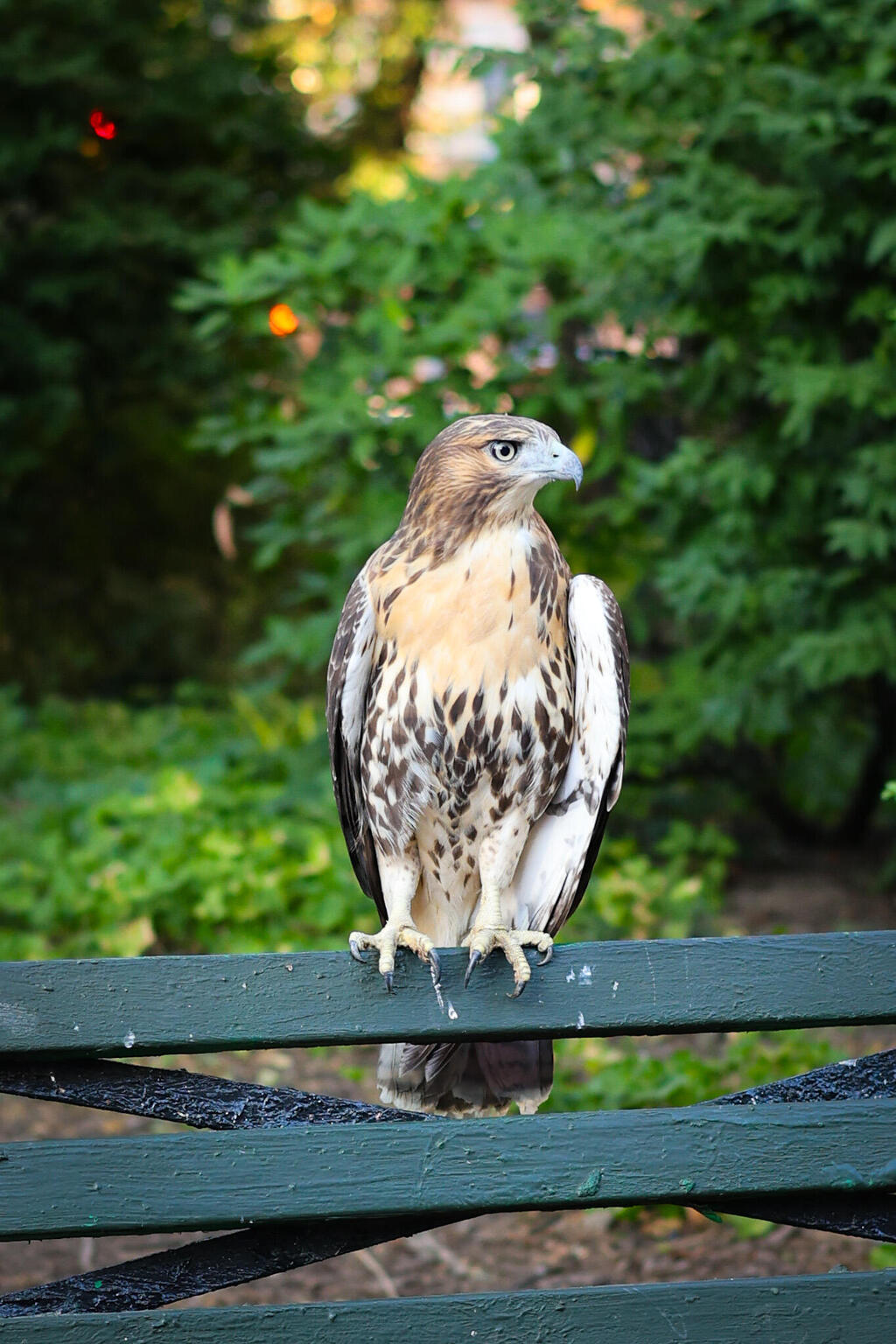

East Village even has a bit of wildlife
(Photo: Roee Alman)
The East Village remains a unique neighborhood that defies the pressures of change and gentrification. It offers a rare opportunity for urban, community-based living—slower, more personal, and closer to its residents. With its colorful history, vibrant culture, and strong sense of individuality, the East Village continues to be one of New York City’s most distinctive areas.
